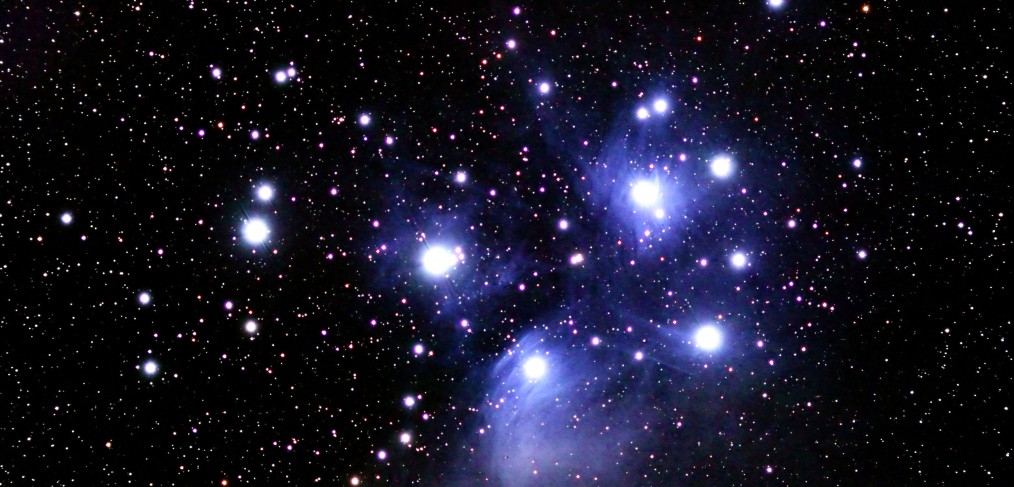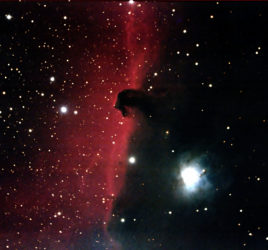
The Seven Sisters of Pleiades
Sitting on the shoulder of Taurus is the open star cluster named the 7-Sisters of Pleiades.
On a star chart they would be designated M45 (Messier 45). There are 6 naked eye visible stars arranged in a tiny question mark. The stars are all blue in color and seem to have a fuzzy glow around them. That glow is the combined light from 500 stars that are members of this open star cluster. The cluster is about 444 light years away and spans 20 light years across. The brightest stars are of type B and between 20 and 30 thousand degrees Kelvin. The entire open cluster is approximately 70 to 100 million years old. All of the stars are chemically identical as they are all siblings from a common molecular cloud. The nebulae spawned stars of various masses and the most massive are the B-type stars that give it the visible shape that we see. The name Pleiades devolves from the seven daughters of Atlas and Pleione. Although there are only 6 visible stars, there are stars below naked eye limits that carry the names of Atlas, Pleione and the one lost daughter. In another related tale, the missing (kidnapped) daughter is attributed as Alcor, the dim companion to Mizar in the Big Dipper.
Known since antiquity as it is easily naked eye visible, it was used by various cultures for many purposes.
The Hawaiians used it as a marker for their new year. Each mid-October apparition of the Pleiades marked the beginning of Makahiki season, a new year’s celebration where all wars were stopped and harvest was done. Peaceful competitions of strength and skill were held and the warriors would be feted with grand feasts (Luaus). The Hawaiians called the Pleiades Makali’I or little eyes. This was a test of eyesight and of weather conditions as the stars would blur during bad weather. Other cultures around the world also used this same test of clarity for an indicator of sailing conditions. The Japanese name for this cluster is Subaru. That means “coming together as a team – Unite”. The 8.2 meter Japanese National Telescope on Mauna Kea is also named Subaru.
Astronomers use the Pleiades as a test pattern for telescopes.
The well-known positions of the members are compared in photographs taken through the optics. Deviations are used to measure Pincushion distortion and astigmatism. The star cluster is about 2-degrees in size and most large telescopes have far smaller fields of view. The Pleiades are an important link in the cosmic distance scale. They are close enough to display measurable annual parallax, thus their distance can be determined geometrically via triangulation. Then we can measure their brightness and apply the inverse square law to determine distance. Having multiple avenues of confirmation allow us to calibrate our tools for distance measurement.



